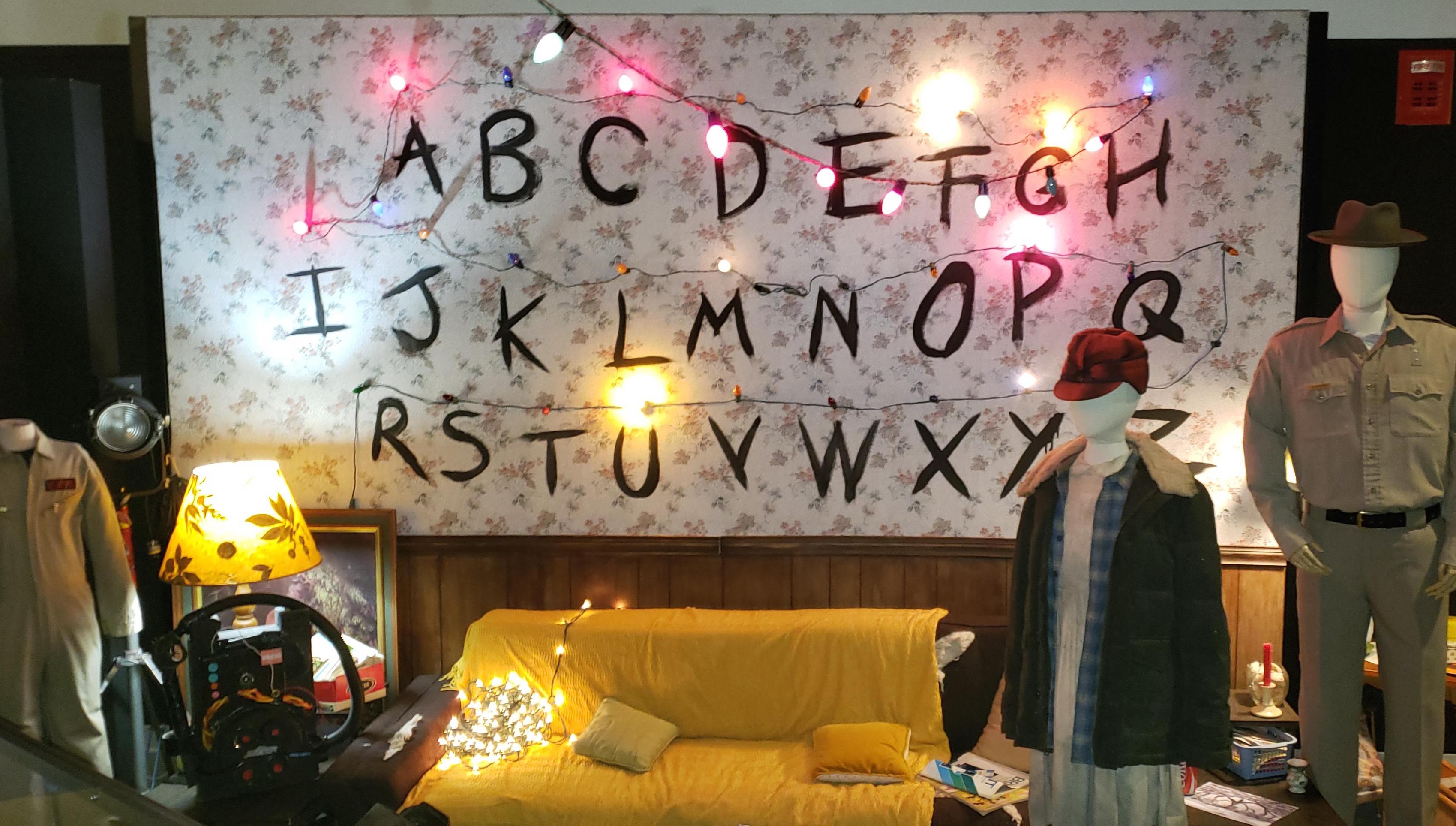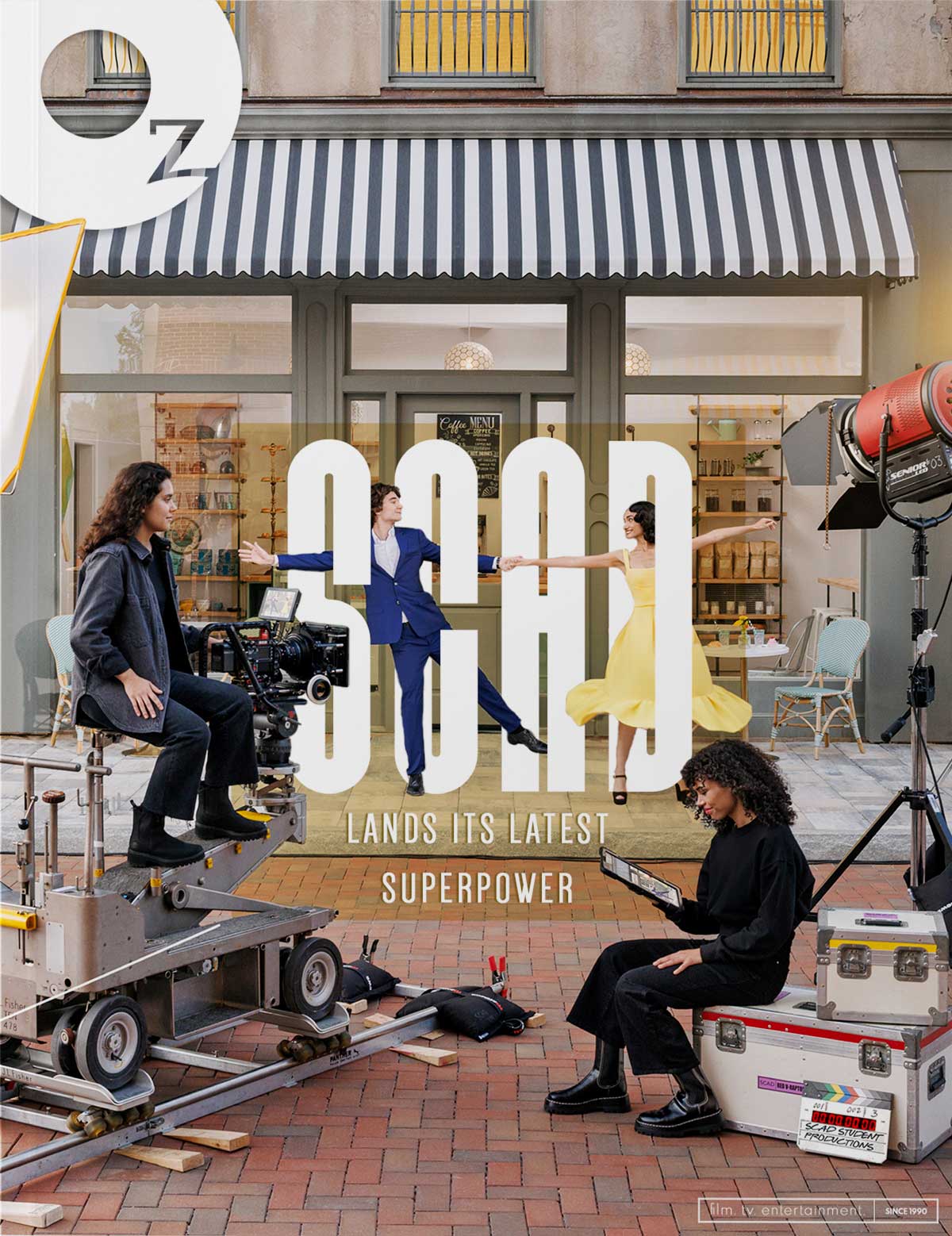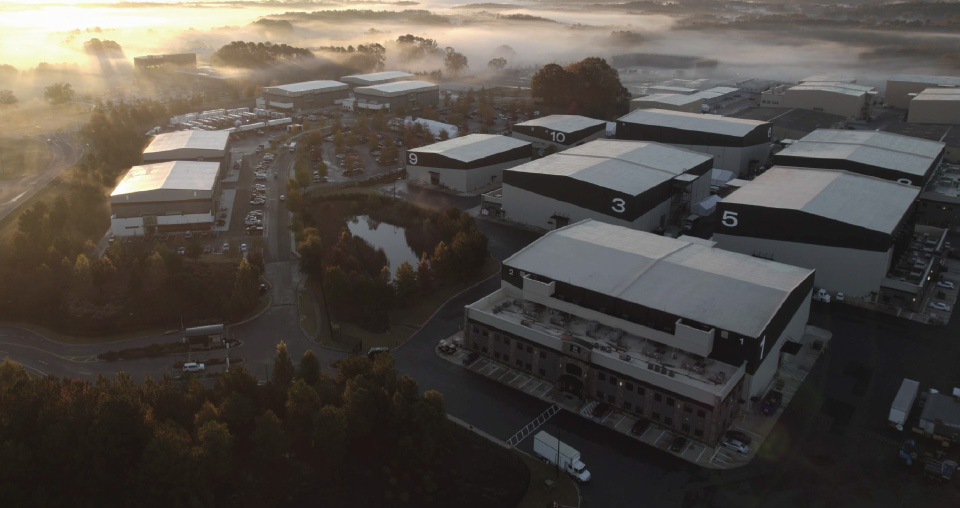Jimmy Carter’s Georgia Film Legacy On Display
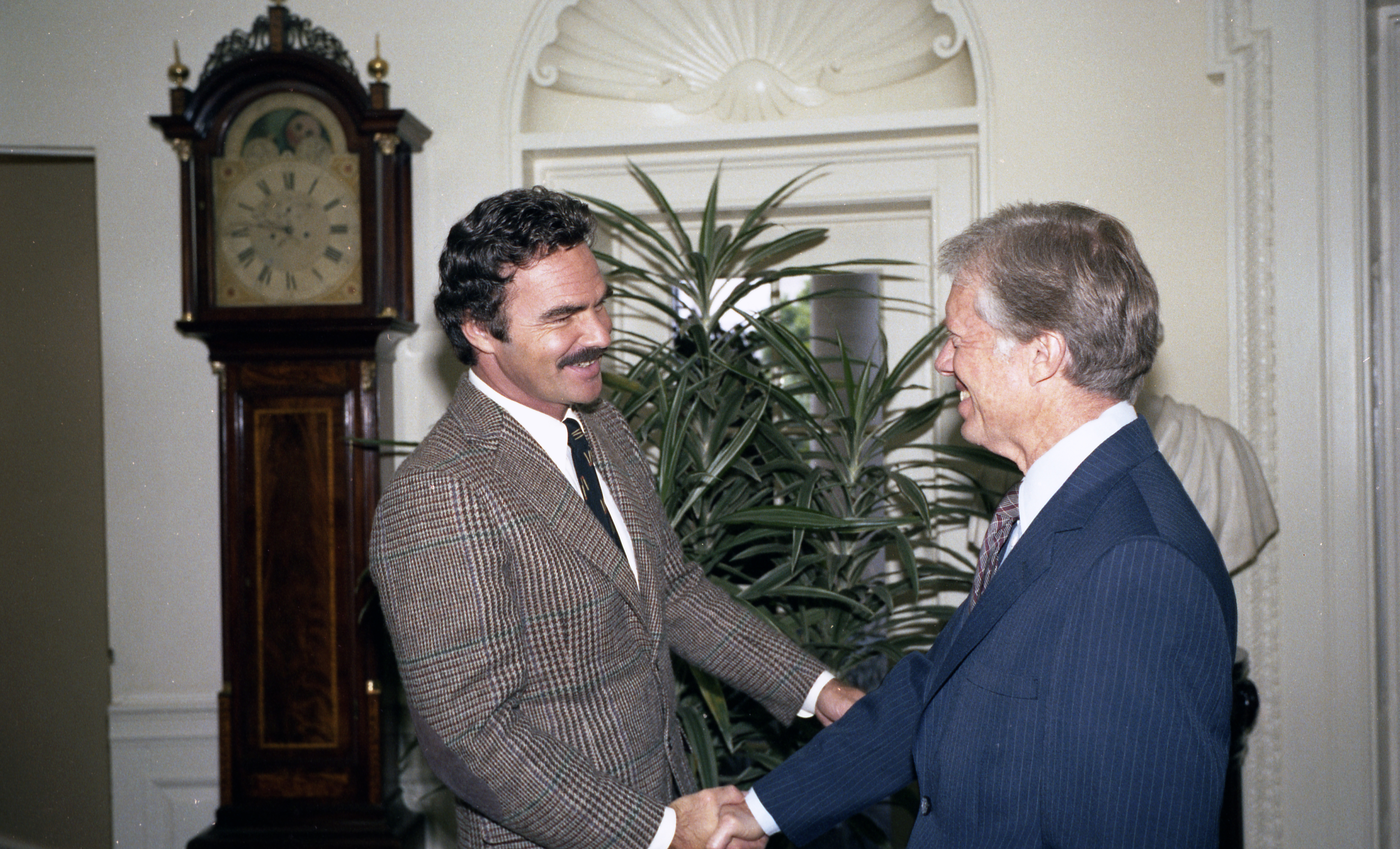
Before Tyler Perry and Marvel turned Georgia into today’s uber-cool, ultra profitable film production capital of the South, there was Jimmy Carter and Burt Reynolds, whose efforts to get a little film called Deliverance shot in North Georgia planted the seeds for the state as a prime movie location. The duo tended those sprouts and solidified those roots in the late ‘70s with huge Georgia-based hits like The Longest Yard and Smokey and the Bandit. Now Carter and Reynolds are finally getting their due with a new exhibit at The Jimmy Carter Presidential Library & Museum in Atlanta.
Georgia on My Screen: Jimmy Carter and the Rise of the Film Industry salutes the history of showbiz in the state with an impressive exhibit boasting a ton of cool memorabilia from past and current productions. The display includes items from Stranger Things, Driving Miss Daisy and the MCU (a complete Captain America costume, anyone?). Dr. Meredith Evans, the director of the library notes, most importantly, “It honors the foresight and economic legacy of Jimmy Carter,” who formed one of the country’s first state-based film offices, kicking off the growth of Georgia’s current $9.5 billion entertainment industry.
The story and the exhibit begin in 1971 when both Carter and Reynolds were still early on their paths to worldwide fame and influence. A former naval engineer, peanut farmer and state representative, Jimmy Carter had just taken the oath as the governor of Georgia, and Burt Reynolds had been working steadily in television with roles in popular shows like Gunsmoke, Dan August and Flipper. Neither had yet broken into the national consciousness. Atlanta author James Dickey was another story, though. In 1970, the former poet laureate of the United States had just published his first novel, the gritty thriller Deliverance, a tale of four city guys who decide to raft down an unspoiled North Georgia river before it’s dammed up and disappears. The trip takes a dark and dangerous turn when they encounter some backwoods locals. (Yes, that’s “Dueling Banjos” you hear in your head.)
Dickey’s book was a well-reviewed bestseller, and by ‘71 he’d adapted it into a screenplay to be shot as a low-budget feature by British director John Boorman, starring Jon Voight (hot off Midnight Cowboy) and the handsome, charismatic Reynolds as his stars
“You don’t find anybody like that. He wasn’t a politician,
he was a nice man who grew nuts.”
-Burt Reynolds
Reynolds grew up in Florida and attended FSU, and he really wanted to shoot the movie in that state, as he told reporters at the Rome Film Festival in November 2017. Then-Florida Governor Reubin Askew had nixed the idea. Reynolds happened to have a small hunting cabin in North Georgia and was apparently familiar with the Chattooga River, which he surmised would be perfect for the movie. So as the actor, who passed away in 2018 at the age of 82, tells it, he paid a visit to Governor Jimmy Carter. “Well, I came to the nicest man on the planet, and I said, ‘Can I shoot a movie here?’ The last governor said he didn’t want me to. And he said, ‘We’ll fix that.’ He was so nice. … You don’t find anybody like that. He wasn’t a politician, he was a nice man who grew nuts.”
Shot in the summer of 1971 in Rabun County and at the Tallulah Gorge southeast of Clayton, the production brought serious bucks to those communities. At the time, Ed Spivia happened to be the PR director for the Georgia Department of Industry and Trade (now known as the Office of Economic Development) at the time. “I went up to Clayton to see what they were doing with Deliverance. I nosed around and found out they were buying property along the river, and hotels, and food. Helping the community. Georgia was having a downtime, and I thought more films would be a good way to get more money spent on Georgia.” Governor Carter agreed.
Deliverance was both critically and commercially successful, earning three Oscar nominations, including one for Best Picture. It’s unclear whether then Governor Carter knew about that controversial aspect of the movie, but Spivia told Atlanta Magazine that he sat behind the Carters at the premiere. “When the actor lets out, ‘Yahoo, that’s the wildest fucking river in the world,’ I went under my seat. Jimmy thought it was fine, though. He always said not to inject our feelings about anybody’s movie. We were there to help them.”
That attitude most likely appealed to ‘70s-era push-the-envelope filmmakers, and with his eye on the economic prize, Carter would soon sign an executive order establishing the Motion Picture and Television Advisory Committee within the Department of Industry and Trade. The following year, the newly formed organization took out a full-page ad in the Hollywood trade paper, Variety. And in fact, the document is one of the first artifacts you’ll come across at the Georgia on My Screen exhibit.
The ad reads, in part, “Jimmy Carter is the Governor of Georgia. And he works closely with our State Motion Picture and Television Advisory Committee. They don’t censor pictures. They help you make them. In any way possible. For Wooster Productions, they blew up an automobile. Boom.” It goes on to tout the state’s access to free scouting transportation, info on studios, labs, rentals and even weather forecasts. The tag line: “Georgia. We’ll do anything to be in the film business.”
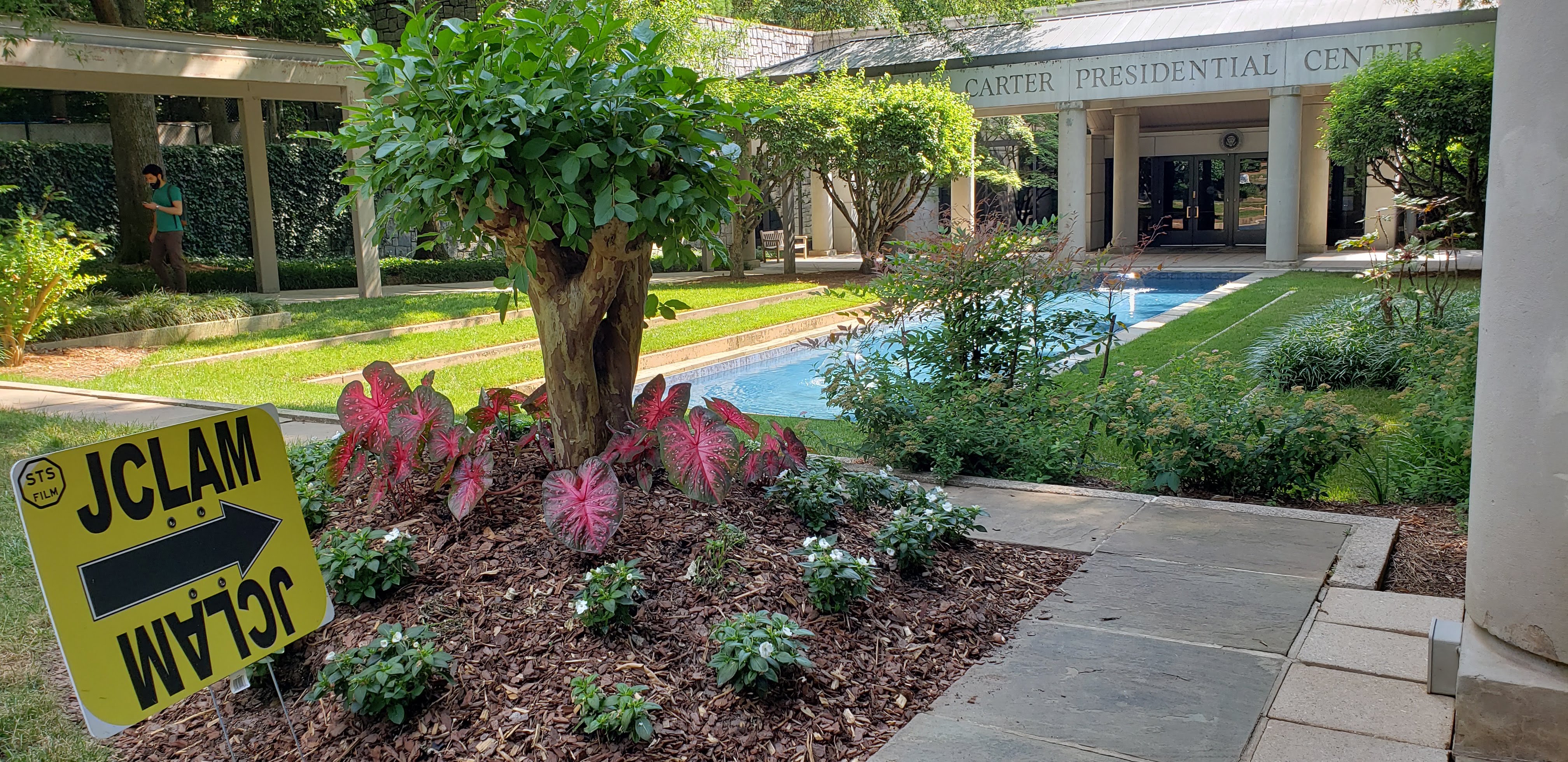
As Georgia on My Screen then goes on to show, Carter followed up the ad with a trip to L.A. in 1973 specifically to lobby production companies to bring their shows to the state. And while he was there, he took the opportunity to appear on an episode of What’s My Line?, the popular game show that challenged celebs to try to figure out a contestant’s occupation through a series of questions.
Governor Carter showed his growing media savvy by plugging the state’s new initiative as part of his appearance. As he told the show’s host, Larry Blyden, “We have a good program for recruiting motion pictures to Georgia. We’ve gotten into the motion picture business in a big way.” And Carter could speak Hollywood’s language, too. When asked if the weather down South would be good enough for productions to successfully shoot in the state, Carter was ready with a smooth answer: “We’ve never had a film yet that came over the budget or over the time schedules.” He went on to mention Deliverance, and added, “Jon Voight’s been back to make another film,” which would be Conrack. “And we just finished one in our state prison, Reidsville, which is called The Longest Yard, with Burt Reynolds.”
It worked. Before he left the governor’s office in 1975, 26 more TV shows and movies would be shot in the state. The Longest Yard wouldn’t be the last film Burt Reynolds would shoot in Georgia, either. He’d go on to make Gator (1976), Smokey and the Bandit (1977) and The Cannonball Run (1981), as well as the crime drama Sharky’s Machine (1981), which had its big Hollywood premiere at the Fox Theatre. “Every time anybody wants to make a movie with me about something, I ask, ‘Can we shoot this in Georgia?’…I just love coming here, I love the people here,” Reynolds enthused. You’ll find plenty of Smokey and the Bandit clips and pictures at the exhibit, which notes that the film was shot almost entirely in Georgia and was second only to Star Wars that year at the box office.
Carter wasn’t done, either. Another goal was to increase the opportunities for women and people of color in Georgia. Once he got to the White House, Carter installed the most diverse staff ever. His office would also go on to produce a report addressing the problems women and minorities faced and still face in the entertainment business. And he continued to work his Hollywood connections.
In an interesting bit of foreshadowing, the exhibit reveals that President Carter actually hosted Stan Lee and the Marvel superheroes at the White House for the kick-off of the Captain America Youth Energy Conservation Program. President and Mrs. Carter also celebrated the 10th anniversary of the American Film Institute, hosting a glam-packed TV broadcast. A copy of his remarks that evening is included in the exhibit and gives a glimpse into his personal connection to the industry. “The movies have touched all our lives, mine as a farm boy. I am sure the first time I saw the White House was from the back seat of the movie theater.” That theater would’ve been the Rylander in the town of Americus. It’s also where young Jimmy Carter went on his first date with future wife Rosalynn and where he learned about segregation when his friend A.D. had to sit apart from him in the “colored” section. According to the website Gizmodo.com, Carter screened some 400 movies over the course of his single term, more than any other President.

“It gave the library the opportunity to show how many jobs
the industry has created in Georgia, and to focus on the
diversity its brought to the state as well.”
-Dr. Meredith Evans
According to Dr. Evans, Carter heartily approved the Georgia on My Screen project as well. “He was thrilled about it,” she reports. “It allowed the library the opportunity to show how many jobs the industry has created in Georgia, and to focus on the diversity it brought to the state as well.”
It’s possible no one’s done more on that score than Tyler Perry, who’s represented in the exhibit both as a visionary who turned the abandoned Fort McPherson into a multimillion-dollar film studio, and as his character Madea, in a tableau complete with house dress and oxygen tank.
Visitors to the exhibit have a chance to get up-close and personal with screen used props and items that are rarely seen outside Hollywood. There are several set pieces displayed, including items from The Vampire Diaries and The Originals, the famed living room from Stranger Things, an impressive Marvel Films section featuring everything from Iron Man’s mask to Star Lord’s quad blasters, Thor’s mighty hammer and Black Panther’s mask and shield, along with Shuri’s vibranium gauntlets.
